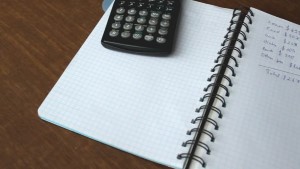
MoneyPulse – Helping you achieve your financial goals
What if I told you that almost 70 percent of American households have no idea where we spend a big portion of our money each month? Our money! We work so hard for that money every day, yet we don’t even know where most of it was spent at the end of the month. We simply say that we need more. Well, let’s start by looking in the most obvious place: our own pockets.
A Gallup poll from 2013 reported that only approximately 30 percent of American households prepare a budget. This explains why in August of 2015 a GOBankingRates survey showed almost 70 percent of households have less than $1,000 in savings. This is not because they don’t make a good living; over 70% of those people have a household income of over $100,000 per year. How can this happen?! When you don’t even know how to budget money, saving it becomes an even tougher task.
Where do I start?
The first thing you must do is research. This is the hardest part of starting your budget. It takes time and discipline, but you must find out where all of your money goes each month in order to learn how to keep some in your pocket.
Track your spending
Get a day planner or notebook and write down every dime you spend over one month (three months is a better gauge, but you can start with one). Most of us will be surprised to see how much we spend on Uber, meals out, shopping; even the daily cups of coffee can add up. This is the best way to truly discover how we spend our money. Start with the easy stuff—the necessities, mortgage or rent, car payment, etc. These items are recurring and less likely to change. Then make sure you log all of the luxuries, the wants, meals out, shopping, etc. This is the area in which some adjustments can put you on a path to saving some money. The main thing: be honest with yourself! Don’t stop writing Starbucks down just because it’s on there the previous 17 days. This is the valuable information that you need to know about yourself and your spending habits.
Look at the numbers
Add up your monthly after-tax income. It is important that you are starting with the amount of money you actually bring home, not your gross annual income. Also, do not include bonuses or yearly pay raises because those are not guaranteed amounts.
Add up your monthly necessary bills: mortgage or rent, car note, student loans, credit card payments, utilities, groceries. Subtract the monthly necessary bills from the take-home pay amount.
(Example household after-tax income minus needs: $5,000 – $3,000 = $2,000 left over)
Now add up the luxury items from your research. This will include cable, dining out, subscription services, shopping, hair, nails, cellphone, and any other monthly non-necessity you came across during your research. Subtract that number from the amount left after subtracting your needs.
(Example money left after necessities are paid minus luxury items: $2,000 – $1,000 = $1,000 remaining)
In this example, $1,000 is the money that should be used each month for saving and investing.
This is the commonly used 20/60/20 rule. Sixty percent of your take-home income should take care of all of your needs. Your luxury items should take up no more than 20 percent of your after-tax income. This will leave you with 20 percent to invest in your family’s future. If you are unsure which category to put an item in, prioritize it. For instance, charitable donations are considered a necessity for some, but a luxury for others. It is completely up to you.
If you see that your monthly necessary bills are more than 60 percent of your income, you may be living above your actual means. For any income level, be it $36,000 or $360,000, this rule can prevent you from being one missed check away from some sleepless nights.
If your monthly necessary bills are more than 60 percent, take a serious look at your lifestyle and decide where you can begin to downsize, whether it means a smaller house, less expensive car, paying down debt, even doing better monitoring your utilities or cellphone bill. Be disciplined with your luxury spending. Once you have done the research you will know exactly how much 20 percent is; then you can make it a priority not to spend more than that amount each month. No cutback is too small, as they all add up to savings.
If you do these numbers and have 10 percent of your income remaining, that’s a good start, but you can get to 20 percent. If you come up with a zero or a negative number then it is time to do some deep evaluation of your lifestyle and start cutting back today!













